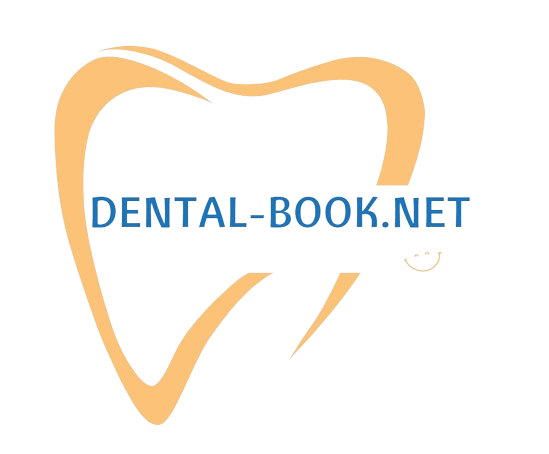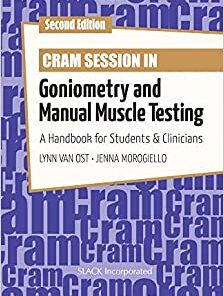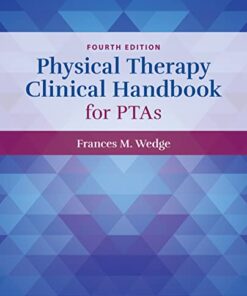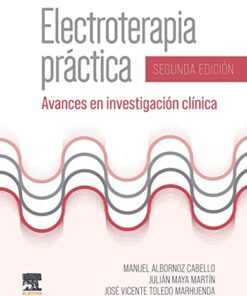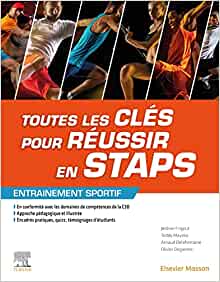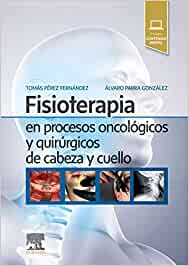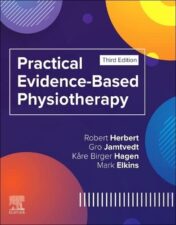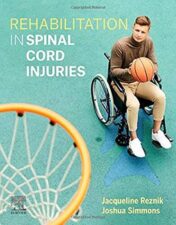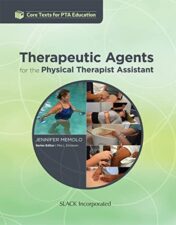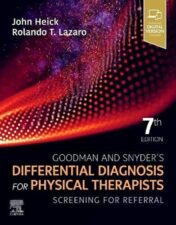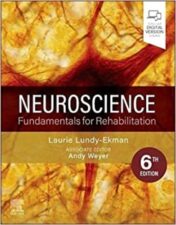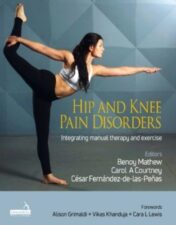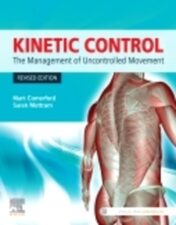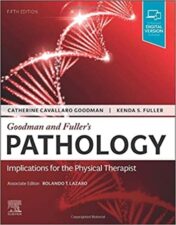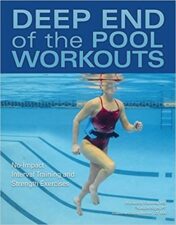Discover the Best Physical Medicine & Rehabilitation Books to Enhance Your Knowledge
Discover the Benefits of Physical Medicine & Rehabilitation Books
Are you looking to improve your knowledge and skills in physical medicine and rehabilitation? If so, then you should consider investing in physical medicine and rehabilitation books. These books provide comprehensive information on the diagnosis, treatment, and management of musculoskeletal and neuromuscular disorders. They also offer valuable insights into the latest advances in the field, such as new technologies and techniques. With these books, you can gain a better understanding of the principles and practice of physical medicine and rehabilitation, enabling you to provide better care for your patients. At DentalBooks.net, you can find a wide selection of physical medicine and rehabilitation books from leading authors and publishers. Whether you’re a student, practitioner, or researcher, you’ll be able to find the perfect book to meet your needs. So don’t wait any longer – explore our collection today and start learning more about physical medicine and rehabilitation! Visit DentalBooks.net now.
PHYSICAL MEDICINE & REHABILITATION BOOKS
PHYSICAL MEDICINE & REHABILITATION BOOKS
Fascial Manipulation ® for Internal Dysfunctions – Practical Part (Original PDF from Publisher)
PHYSICAL MEDICINE & REHABILITATION BOOKS
PHYSICAL MEDICINE & REHABILITATION BOOKS
PHYSICAL MEDICINE & REHABILITATION BOOKS
Physical Therapy Clinical Handbook for PTAs, 4th Edition (Original PDF from Publisher)
PHYSICAL MEDICINE & REHABILITATION BOOKS
PHYSICAL MEDICINE & REHABILITATION BOOKS
Guide to Evidence-Based Physical Therapist Practice, 5th Edition (Original PDF from Publisher)
PHYSICAL MEDICINE & REHABILITATION BOOKS
Foundations of Kinesiology, 2nd Edition (Original PDF from Publisher)
PHYSICAL MEDICINE & REHABILITATION BOOKS
Electroterapia práctica (2ª ed.): Avances en investigación clínica (Original PDF from Publisher)
PHYSICAL MEDICINE & REHABILITATION BOOKS
Campbell’s Physical Therapy for Children, 6th edition (Original PDF from Publisher)
PHYSICAL MEDICINE & REHABILITATION BOOKS
PHYSICAL MEDICINE & REHABILITATION BOOKS
Oncology Rehabilitation: A Comprehensive Guidebook for Clinicians (Original PDF from Publisher)
PHYSICAL MEDICINE & REHABILITATION BOOKS
PHYSICAL MEDICINE & REHABILITATION BOOKS
Physiotherapy for the Hip Joint (Original PDF from Publisher)
PHYSICAL MEDICINE & REHABILITATION BOOKS
Whittle’s Gait Analysis, 6th edition (Original PDF from Publisher)
PHYSICAL MEDICINE & REHABILITATION BOOKS
Soins primaires en kinésithérapie (Original PDF from Publisher)
PHYSICAL MEDICINE & REHABILITATION BOOKS
Médecine du ski: Pratiques, recommandations, prévention (Original PDF from Publisher)
PHYSICAL MEDICINE & REHABILITATION BOOKS
PHYSICAL MEDICINE & REHABILITATION BOOKS
Toutes les clés pour réussir en STAPS. Mention « Éducation Motricité » (Original PDF from Publisher)
PHYSICAL MEDICINE & REHABILITATION BOOKS
Fisioterapia en procesos oncológicos y quirúrgicos de cabeza y cuello (Original PDF from Publisher)
PHYSICAL MEDICINE & REHABILITATION BOOKS
Practical Evidence-Based Physiotherapy,3rd edition 2022 Original PDF
PHYSICAL MEDICINE & REHABILITATION BOOKS
PHYSICAL MEDICINE & REHABILITATION BOOKS
Therapeutic Agents for the Physical Therapist Assistant 2022 Original PDF
PHYSICAL MEDICINE & REHABILITATION BOOKS
PHYSICAL MEDICINE & REHABILITATION BOOKS
PHYSICAL MEDICINE & REHABILITATION BOOKS
PHYSICAL MEDICINE & REHABILITATION BOOKS
Hip and Knee Pain Disorders Integrating manual therapy and exercise 2022 Original pdf
PHYSICAL MEDICINE & REHABILITATION BOOKS
Kinetic Control Revised Edition The Management of Uncontrolled Movement 2020 Original pdf
PHYSICAL MEDICINE & REHABILITATION BOOKS
Goodman and Fuller’s Pathology: Implications for the Physical Therapist 5th Ed 2022 Original PDF
PHYSICAL MEDICINE & REHABILITATION BOOKS
Introduction
Are you looking to enhance your knowledge of physical medicine and rehabilitation? Look no further! Discover the best physical medicine and rehabilitation books to help you gain a better understanding of this field. From textbooks to reference guides, these books provide comprehensive coverage of the latest developments in the field. With detailed information on topics such as anatomy, physiology, diagnosis, treatment, and more, these books are essential for anyone interested in physical medicine and rehabilitation. Whether you're a student, practitioner, or just curious about the field, these books will help you gain a deeper understanding of the subject.
Overview of Physical Medicine and Rehabilitation: A Comprehensive Guide
Physical Medicine and Rehabilitation: A Comprehensive Guide is an essential resource for medical professionals, providing a comprehensive overview of the field of physical medicine and rehabilitation. This guide provides an in-depth look at the various aspects of physical medicine and rehabilitation, including diagnosis, treatment, and management of musculoskeletal, neurological, and other conditions. It also covers topics such as patient education, communication, and ethical considerations.
The book begins with an introduction to physical medicine and rehabilitation, discussing the history of the field, its scope, and the roles of different healthcare professionals. It then moves on to discuss the principles of physical medicine and rehabilitation, including anatomy, physiology, biomechanics, and pharmacology. The book also covers the evaluation and management of musculoskeletal, neurological, and other conditions, as well as the use of therapeutic modalities, such as exercise, manual therapy, and electrical stimulation.
In addition, Physical Medicine and Rehabilitation: A Comprehensive Guide provides information on the psychological aspects of physical medicine and rehabilitation, including patient education, communication, and ethical considerations. It also discusses the role of technology in physical medicine and rehabilitation, including the use of telemedicine, robotics, and virtual reality. Finally, the book provides an overview of the current trends in physical medicine and rehabilitation, including the use of evidence-based practice and the integration of complementary and alternative therapies.
Overall, Physical Medicine and Rehabilitation: A Comprehensive Guide is an invaluable resource for medical professionals, providing a comprehensive overview of the field of physical medicine and rehabilitation. It is an essential reference for anyone interested in learning more about this important field.
The Role of Physical Therapy in Injury Prevention and Recovery
Physical therapy plays an important role in injury prevention and recovery. It is a form of healthcare that focuses on restoring movement and function to the body after an injury or illness. Physical therapists use a variety of techniques, including exercise, manual therapy, and education, to help patients recover from injuries and prevent future ones.
Physical therapists are trained to assess a patient’s condition and develop a treatment plan tailored to their individual needs. They can provide advice on how to prevent injuries, such as proper warm-up and cool-down exercises, stretching, and strengthening exercises. They can also provide guidance on how to modify activities to reduce the risk of injury.
Physical therapists can also help with injury recovery. After an injury, physical therapists can help restore strength, flexibility, and range of motion. They can also help reduce pain and swelling, improve balance and coordination, and increase endurance.
Physical therapists can also provide education on how to manage chronic conditions, such as arthritis, diabetes, and obesity. They can teach patients how to modify activities to reduce the risk of further injury and how to maintain a healthy lifestyle.
In addition to helping with injury prevention and recovery, physical therapists can also help with rehabilitation after surgery. They can help with post-operative care, such as wound care, scar management, and pain management. They can also help with exercises to restore strength and mobility.
Physical therapy is an important part of injury prevention and recovery. It can help reduce the risk of injury, speed up recovery time, and improve overall health and wellbeing.
Understanding the Benefits of Physical Medicine and Rehabilitation
Physical medicine and rehabilitation (PM&R) is a medical specialty that focuses on the diagnosis, treatment, and management of physical impairments and disabilities. It is also known as physiatry or rehabilitation medicine. PM&R physicians are experts in restoring optimal function to people with physical impairments or disabilities resulting from injury, illness, or congenital conditions.
PM&R physicians use a variety of treatments to help patients regain their independence and improve their quality of life. These treatments may include medications, physical therapy, occupational therapy, speech-language pathology, orthotics and prosthetics, assistive technology, and adaptive equipment. In addition, PM&R physicians may provide counseling and education to help patients cope with their disability and adjust to their new lifestyle.
The benefits of physical medicine and rehabilitation are numerous. PM&R can help patients recover from injuries, illnesses, and disabilities, allowing them to return to their normal activities. It can also help reduce pain and improve mobility, strength, and coordination. Additionally, PM&R can help improve a patient’s overall quality of life by providing emotional support and helping them adjust to their new lifestyle.
PM&R can also be beneficial for those who have suffered a stroke or traumatic brain injury. PM&R can help these individuals regain their ability to walk, talk, and perform daily activities. It can also help them manage their symptoms and improve their quality of life.
Finally, PM&R can help those with chronic conditions such as arthritis, multiple sclerosis, and spinal cord injuries. PM&R can help these individuals manage their symptoms and improve their quality of life.
Overall, physical medicine and rehabilitation can be an invaluable tool for those suffering from physical impairments or disabilities. It can help them regain their independence and improve their quality of life. If you or someone you know is suffering from a physical impairment or disability, consider consulting a PM&R physician to learn more about the benefits of this specialty.
Exploring the Latest Advances in Physical Medicine and Rehabilitation
Physical medicine and rehabilitation (PM&R) is a medical specialty that focuses on the diagnosis, treatment, and management of physical impairments and disabilities. It is an interdisciplinary field that combines the expertise of physicians, physical therapists, occupational therapists, speech-language pathologists, psychologists, and other healthcare professionals to help patients regain their independence and improve their quality of life.
The latest advances in PM&R are focused on improving patient outcomes through the use of innovative technologies and treatments. For example, robotic-assisted physical therapy has been used to help patients with neurological conditions such as stroke and spinal cord injury regain movement and function. This technology uses robotic arms to provide precise, repetitive movements that can help strengthen muscles and improve coordination.
Another area of advancement in PM&R is the use of virtual reality (VR) technology. VR can be used to create immersive environments that allow patients to practice activities of daily living (ADLs) such as walking, climbing stairs, and reaching for objects. This type of training can help patients relearn skills that may have been lost due to injury or illness.
In addition, PM&R specialists are using telemedicine to provide remote care to patients who may not be able to access traditional healthcare services. Telemedicine allows healthcare providers to connect with patients via video conferencing, allowing them to assess and treat patients without having to be physically present. This can be especially beneficial for patients who live in rural areas or those who have difficulty traveling to a clinic.
Finally, PM&R specialists are utilizing advanced imaging techniques such as ultrasound and MRI to diagnose and monitor musculoskeletal conditions. These imaging techniques can provide detailed images of the body’s soft tissues, allowing for more accurate diagnoses and better treatment plans.
Overall, the latest advances in PM&R are helping to improve patient outcomes and quality of life. By utilizing innovative technologies and treatments, PM&R specialists are able to provide more effective care and help patients regain their independence.
Strategies for Implementing Physical Medicine and Rehabilitation Programs
Physical medicine and rehabilitation programs are designed to help individuals with physical disabilities or chronic illnesses improve their quality of life. These programs can include physical therapy, occupational therapy, speech-language pathology, and other therapeutic interventions. Implementing a successful physical medicine and rehabilitation program requires careful planning and consideration of the individual’s needs.
The first step in implementing a physical medicine and rehabilitation program is to assess the individual’s current level of functioning. This assessment should include an evaluation of the individual’s physical, cognitive, and emotional abilities. It should also take into account any medical conditions that may affect the individual’s ability to participate in the program. Once the assessment is complete, the team can develop an individualized treatment plan that addresses the individual’s specific needs.
The next step is to create a timeline for the program. This timeline should include goals for each stage of the program, as well as milestones that will be used to measure progress. The timeline should also include a plan for transitioning out of the program once the individual has achieved their goals.
Once the timeline is established, the team can begin to implement the program. This may involve providing physical therapy, occupational therapy, and/or speech-language pathology services. It may also involve providing psychological support, such as counseling or psychotherapy. Additionally, the team may need to provide assistive technology, adaptive equipment, and other resources to help the individual achieve their goals.
Finally, it is important to monitor the individual’s progress throughout the program. This can be done through regular assessments and feedback from the individual and their family. Regular communication between the team and the individual is essential to ensure that the program is meeting the individual’s needs and helping them reach their goals.
Implementing a successful physical medicine and rehabilitation program requires careful planning and consideration of the individual’s needs. By assessing the individual’s current level of functioning, creating a timeline for the program, and providing appropriate services and resources, the team can help the individual achieve their goals and improve their quality of life.
Conclusion
Physical Medicine and Rehabilitation is an important field of medicine that can help improve the quality of life for those suffering from physical disabilities. With the right knowledge, you can make a difference in the lives of those around you. Discovering the best Physical Medicine & Rehabilitation books can help you gain the necessary skills to provide the best care possible. From textbooks to clinical guides, there are many resources available to help you enhance your knowledge and become a better practitioner. With the right information, you can make a positive impact on the lives of those in need.
